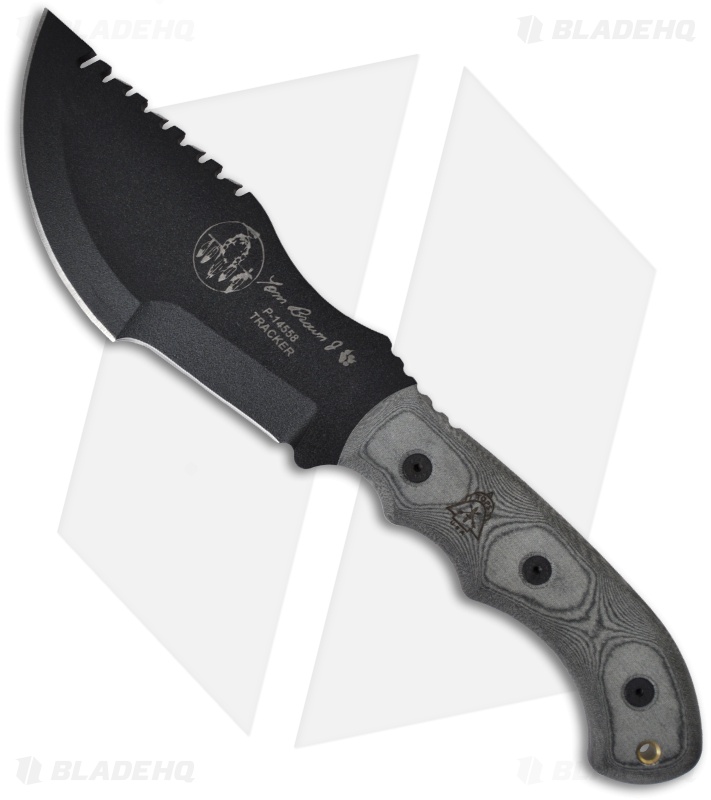-
The BladeForums.com 2024 Traditional Knife is available! Price is $250 ea (shipped within CONUS).
Order here: https://www.bladeforums.com/help/2024-traditional/
You are using an out of date browser. It may not display this or other websites correctly.
You should upgrade or use an alternative browser.
You should upgrade or use an alternative browser.
How should I sharpen a huntsman knife?
- Thread starter Foxinator
- Start date
- Joined
- Sep 30, 2014
- Messages
- 848
I think you should get a WorkSharp field sharpener (basic model) to use because it has guides. Then get the stone. Free hand sharpening is a great skill but may be hard to maintain the proper angle. You can find it on the big river site for under 20$
- Joined
- Dec 7, 2016
- Messages
- 11,261
gadegetgeek's advice is excellent. Whatever medium you decide on (stone, sandpaper, whatever), I would add that on a knife like this with such an odd grind I'd break the edge down into section when sharpening. Check out the pic below. Treat the area with the red dots as one section, the green dots as another section, and the yellow dots as a third section. Focus on each part of the edge (on both sides) individually, instead of trying to sharpen the whole edge at once. The only part of this blade that's going to be problematic is the little transitional area between the red and green sections. I would worry too much about that part of the edge, at least at first.
View attachment 926594
^ this is excellent advice.
Original Poster certainly picked an extremely hard blade to start learning sharpening on. I highly recommend he follows G Scott’s advice and treats the blade as 3 separate sections.
Another suggestion is to watch youtube videos on sharpening.
Btw the reason people are saying this knife is not great quality is because it is a design produced by many lower end makers. It is actually supposed to be a “clone” of the popular Tom Brown Tracker knife with enough differances that one cannot call it a direct copy. However if you look at the edge shape we can see the similarity.
Every thread needs some humour. How about the Tops Tom Brown Digger Dagger?


Something tells me this may be better.

Ok. Would is be best to use a stone or should I go for something like this?
https://www.sharpensbest.com/product-page/sharpens-best-long-handle-pocket-sized-knife-sharp
https://www.sharpensbest.com/product-page/sharpens-best-long-handle-pocket-sized-knife-sharp
- Joined
- Jul 1, 2013
- Messages
- 32,479
Those bottom two are a Japanese pattern called a Yori, Yori, a Dig, Dig! Quite fuctional really!^ this is excellent advice.
Original Poster certainly picked an extremely hard blade to start learning sharpening on. I highly recommend he follows G Scott’s advice and treats the blade as 3 separate sections.
Another suggestion is to watch youtube videos on sharpening.
Btw the reason people are saying this knife is not great quality is because it is a design produced by many lower end makers. It is actually supposed to be a “clone” of the popular Tom Brown Tracker knife with enough differances that one cannot call it a direct copy. However if you look at the edge shape we can see the similarity.

Every thread needs some humour. How about the Tops Tom Brown Digger Dagger?


Something tells me this may be better.

- Joined
- Dec 7, 2016
- Messages
- 11,261
Those bottom two are a Japanese pattern called a Yori, Yori, a Dig, Dig! Quite fuctional really!
I thought it was Hori Hori, although many Japanese words have various pronunciations. Yeah I would pick one up if I was a gardener.
- Joined
- Jul 1, 2013
- Messages
- 32,479
You’re most likely correct on that! ?? It’s a Dig Dig!I thought it was Hori Hori, although many Japanese words have various pronunciations. Yeah I would pick one up if I was a gardener.
- Joined
- Jun 13, 2006
- Messages
- 3,724
Ok. Would is be best to use a stone or should I go for something like this?
https://www.sharpensbest.com/product-page/sharpens-best-long-handle-pocket-sized-knife-sharp
For the most part, I'd avoid carbide sharpeners like that one in the link.
If you wanted to get sharpening relatively cheaply, you can always try the old sandpaper method... various grits of aluminum oxide wet/dry sandpaper depending on your budget and just how dull the knife is starting out. While lower grits like 40 and 60 can chew up an edge if you botch it, they can take a LOT of work out of reprofiing a somewhat obtuse edge.
I'd start with a few grits between maybe 60 to 2000... or to 1200 if money's tight. The sharpie method folk recommend here will be a help if you want to match the existing angle. Me, I like to take the shoulder off the factory edges cause they're always too thick for me.
If you can imagine the cross-section of the blade in your mind's eye, I find this, combined with access to low-grit abrasives, was a big help in understanding sharpening.
P.S.: Because of the odd shape of your huntsman's edge, I'd recommend finding a flat block of wood that is narrow enough to fit inside that inner "recurve" portion of the blade. Then I'd cut strips of the sandpaper to size, clamp them down to the wood, and use the rig as a poor man's sharpening system. I'd sharpen with a backwards "edge trailing" motion though, just to avoid cutting your sandpaper. And I try to err on the side of making the edge narrow, as it takes less effort to correct than an overly obtuse edge.

